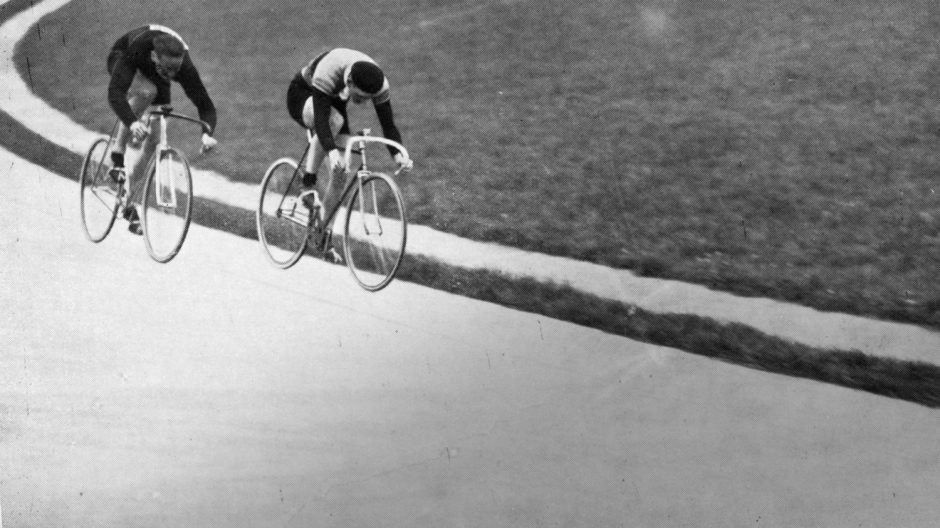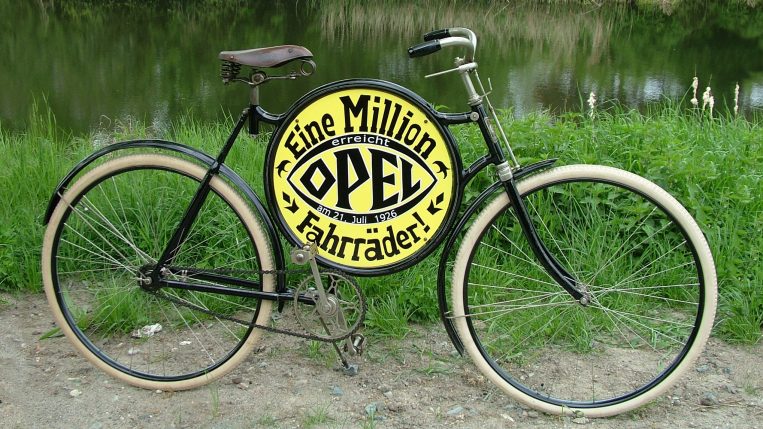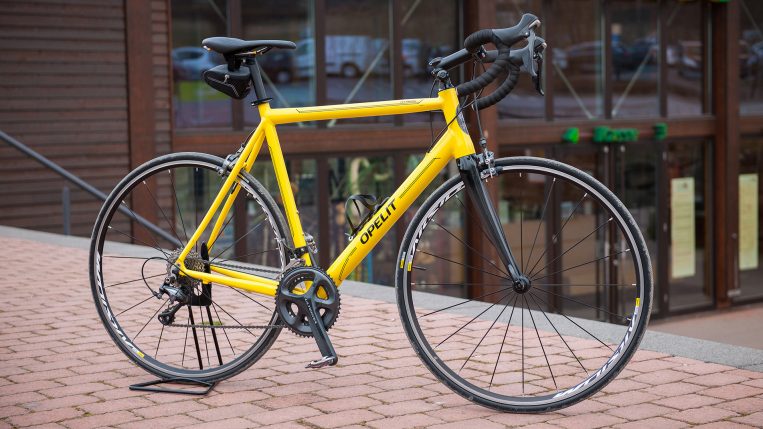As is always the case in discussions of competitive sports, it doesn’t take long for the topic of ‘modern commercialization’ to come up. This trend is discussed for all types of sports, and the growing importance of profits and advertising income in the sports world is widely considered a modern phenomenon. “In fact, though, this kind of blanket criticism of the commercialization of sports, particularly bicycle racing, rests on an incorrect perception of historical circumstances,” says Nicolas Lange.
Opel was a sports
marketing pioneer
Lange, a Rüsselsheim native, earned his master’s in history with a focus on technical history from Technische Universität Darmstadt last year and dedicated his master’s thesis to the history of bicycle production at Opel.
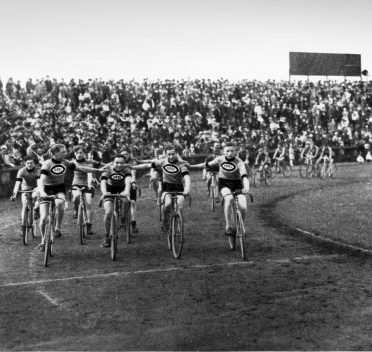
Cyclists from the Nuremberg cycling club riding in front of thousands of spectators (1927).
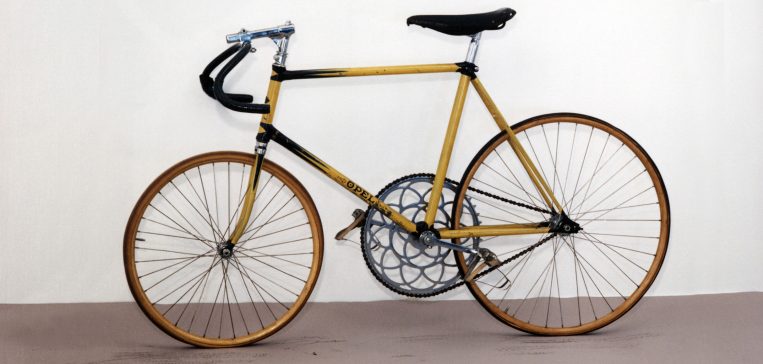
On 29 September 1928, the Belgian cyclist Léon Vanderstuyft set a new world record in the slipstream of his pacer, Lehmann, at the Montlhéry car racetrack near Paris: He covered 122.771 km in one hour inside a modified Opel ZR III racer with 193 gear inches.

This bicycle racing newspaper ad (circa 1900) references races won on Opel bikes.
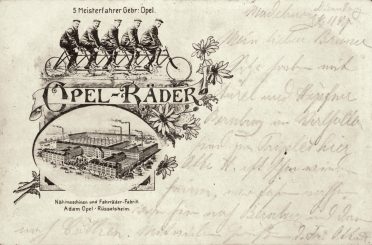
Postcard featuring five champion cyclists.
Lange asserts that “When it comes to soccer, it’s widely known that the sport didn’t start with 11 friends just kicking around a ball together. It’s similar for bicycle racing: Although it began as a ‘gentleman’s sport,’ bicycle manufacturers’ vested economic interests quickly led to the sport’s professionalization.” In his master’s thesis, Lange vividly demonstrated how Opel used bike racing for advertising purposes from the very beginning, and also further developed the sport in doing so. According to Lange, “Numerous historical documents attest that the bicycle races won on Opel models were very important to the company’s advertising.”
Opel wasn’t alone in this, either: The most famous bike race in the world, the Tour de France, was founded in 1903 by Henri Desgrange (the publisher of L’Auto, a French sports paper) as an advertising tactic. The jersey worn by the overall leader of the race at any given point is yellow because L’Auto used to be printed on yellow paper. Moreover, the retinue of cars emblazoned with ads driving around the Tour isn’t a new concept; it’s part of a longtime and ongoing tradition.
Ads promise: ‘Ride an Opel
to become a champion’
“There was no television at that time. Popular events such as tours or six-day races were therefore ideally suited for advertising,” reports Lange. Today, manufacturers are seldom discussed in the context of bicycle racing; general public interest has turned to the cyclists instead. Things were different at the end of the 19th century, when the spotlight was on brands. To wit: Opel’s advertising slogan was ‘Ride an Opel to become a champion’.
Opel History: From Two Wheels to Four
Back when Rüsselsheim was the epicenter of global bicycle production and modern bike racing
As was the case with many companies, Opel shifted its focus more and more towards automobiles in the late 1920s. Nevertheless, bicycle racing remained a key aspect of brand communication, up until the company’s bicycle business was sold off in 1936.
“Opel always knows to recognize and take advantage of opportunities.”
“It’s a pity that the Opel’s glorious history with bicycles doesn’t get more attention,” Lange sums up. “In its dealing with bikes, the company lived out one of its classic credos: Detecting available opportunities at an early stage and making systematic use of them. That’s always been how Opel acts, and it continues that tradition to this day.”
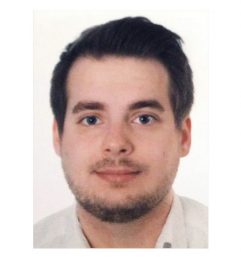
Nicolas Lange wrote his master’s thesis at TU Darmstadt about the historical relationship between bicycle racing and Opel. The title: ‘Fahre Opel, dann wirst Du Meister! – Fahrradrennen unter besonderer Berücksichtigung der Reklamemöglichkeiten, 1886-1937’ (Ride an Opel to Become a Champion! – Bicycle Racing and Advertising Opportunities from 1886 to 1937).

Bicycle production at the Rüsselsheim plant in 1927.
January 2018
